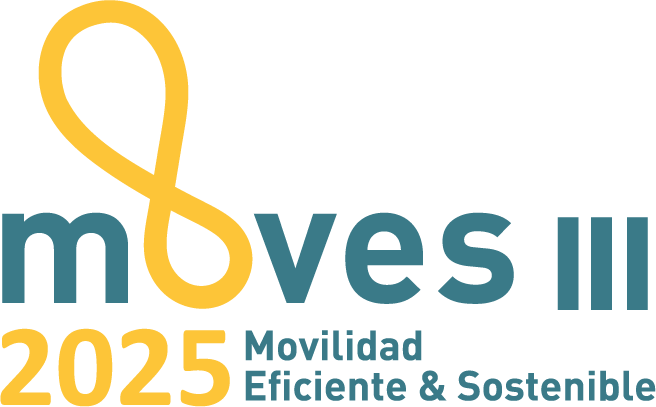Electric car chargers
Individual houses
Solutions for:
- Family houses
- Neighbour communities
- Pre-installations
- Individual houses
Companies
Solutions for the management of chargers of:
- Vehicle fleets
- Workers
- Customers
Power management
Automatic control of the maximum available power.
Load balancing between chargers in use.
Use of surplus solar energy.
MOVES III Grant
Individuals, self-employed and communities:
From 70% of the eligible cost.
Companies:
From 35% to 60% of the eligible cost
Take advantage of the available subsidies of up to 80% on your electric car charger with the MOVES III program.
Commitment to electric mobility
At SolarTradex, our commitment to renewable energy is consistent: if we recommend you take advantage of these subsidies, it is because we use them ourselves. Recently, we have reaffirmed our commitment to corporate sustainability by acquiring a 100% electric vehicle for our operations.
This operation contributes to the decarbonization of our fleet and promotes electric mobility in the renewable energy sector.
Vehicle Acquired: Electric van Citroen Nuevo ë-Jumpy Talla M 75 KWh Club.
Objective: Reduction of CO2 emissions in technical services.
File Number: ICA023/21/018103.
Subsidy Obtained: 2,900 euros.
This investment has received financial support through the Electric Mobility Incentive Program (MOVES III Program) for the year 2025, managed by the IDAE and the Generalitat de Catalunya, and financed by the Ministry for the Ecological Transition and the Demographic Challenge (MITECO).
This aid underscores our alignment as a sustainable company with the goals of accelerating the energy transition.


Team of professionals
We are committed to offering the best service and working hand in hand with our clients to achieve the most appropriate and efficient solution in each case. With our highly qualified and experienced team, you can be sure that your project will be in good hands.
Frequently asked questions

What is better, single-phase or three-phase EVC?

The main difference between both types is the power. EVC's for domestic use have been standardised to a maximum power of 7.4 kW in single-phase and 22 kW in three-phase. In fact, most models have the option of 7.4 kW, 22 kW or 22 kW adaptable to 7.4 kW.

If the EVC is connected to the community meter, how can the energy I use be billed?

The most practical way to bill the energy that is spent charging from the community meter is to install an approved meter (MID) in each EVCand, through a platform managed by the community itself, make the necessary bills (for charging session, at the end of the month, etc).

I have a space in a community car park. What options do I have?

The first option is to install a EVC connected directly to the house meter (if access exists). The cabling up to it can be individual or it can be collective (community pre-installation) depending on what the community decides.
The second consists of installing a protection subframe from the parking meter from which individual derivations would be made for each EVC.

Can schedules be programmed in the EVC?

One of the great advantages of the EVC is to programme the loads in the EV. Each EVC has its App/platform to manage the timetable.

Do you need an internet connection?

The internet connection is only necessary if you want to change some parameter of the installation, such as starting and stopping charging, scheduling charging times or managing users (giving access to RFID cards, etc.).

How is the EVC configured?

EVC's for domestic use are configured through the brand's App. The main configuration is done via Bluetooth. The client, owner of the EVC's, will have access to modify its configuration according to its needs.
In addition, most EVC's allow connection through the Internet to manage some parameters. How to program the loads, start and stop the loads or even modify the maximum power of the EVC.

Can I recharge using the solar surplus?

There are EVC's that allow it. What they need is to read the current consumption through an external meter (the same as load balancing) and the charger will use the surplus energy necessary so that the reading is neither negative nor positive with the minimum charge limitation and/or maximum that the vehicle has connected, this will minimise solar surpluses. For example, if we have 1.3 kW surplus, the EVC will not be able to put it in the vehicle since they are not enough for it to allow charging.
This mode of operation allows two modes of solar surplus management, one in which it will only inject solar surplus into the vehicle and another that allows a mix of charging with grid energy and solar surplus previously defined by the user.

I have more than one charger. What power do I need?

One option is to have an available power greater than the set of maximum powers of the existing EVC's in the installation. This option requires that the contracted power be high (if the company allows it) and, therefore, a high maintenance cost.
The second option is to limit the power of each charger to ensure that the available power is not exceeded. This option limits the load on the vehicles and never takes advantage of the maximum power of the EVC's.
The last option is to install an energy meter that communicates with the main EVC and that it automatically manages the total available power between the chargers in operation. In this way, no more energy than necessary should be contracted (if not wanted) and the EVC's will operate at the maximum power available depending on the EVC's that are in use.

With what real power will I be able to charge the car?

The load will be defined by three factors (as long as the EV allows it):
- The power of the charger (single-phase EVC up to 7.4 kW, three-phase EVC up to 22 kW).
- The contracted power in the electricity company
- The available power taking into account the contracted power and the one the house is consuming. For example, if you have a contracted power of 5 kW and are consuming 3 kW, the available power will be 2 kW.
The EVC can be configured to limit the charging power. Now, waiting to have enough energy and limit the EVC because we don't exceed the contracted power can be very annoying. That's why we installed an external meter that communicates with the EVC to automatically manage what power is available and use the maximum up to the limit that is set (automatic load balancing).

Which EVC suits me best: single-phase or three-phase?

In the case of having a single-phase installation, a single-phase charger must be installed at all costs.
However, single-phase or three-phase EVC's can be installed in a three-phase installation. We must take into account different factors:
Three-phase EVC's can have more power. The car will be charged before, but this energy (contracted power) must be available.
A minimum available power must be guaranteed. In the case of single-phase EVC's it is usually between 1.4 kW and 2.3 kW depending on the car. In the case of three-phase ones, the minimum is between 4.1 kW and 6.9 kW depending on the car.
Finally, the cars are also three-phase or single-phase depending on the model. The limitation comes when a three-phase EVC feeds a single-phase car, then the maximum power will be reduced from 22 kW to 7.4 kW.

How can I bill EVC users for energy?

It must be managed through a platform dedicated to this purpose. There are different platforms that allow different configurations; some are for regular users of that charging point (private use) and others are open to anyone registered on the platform (public use). Depending on the platform, it is possible to manage which users have access to it and the rates they have in a personalised way.





